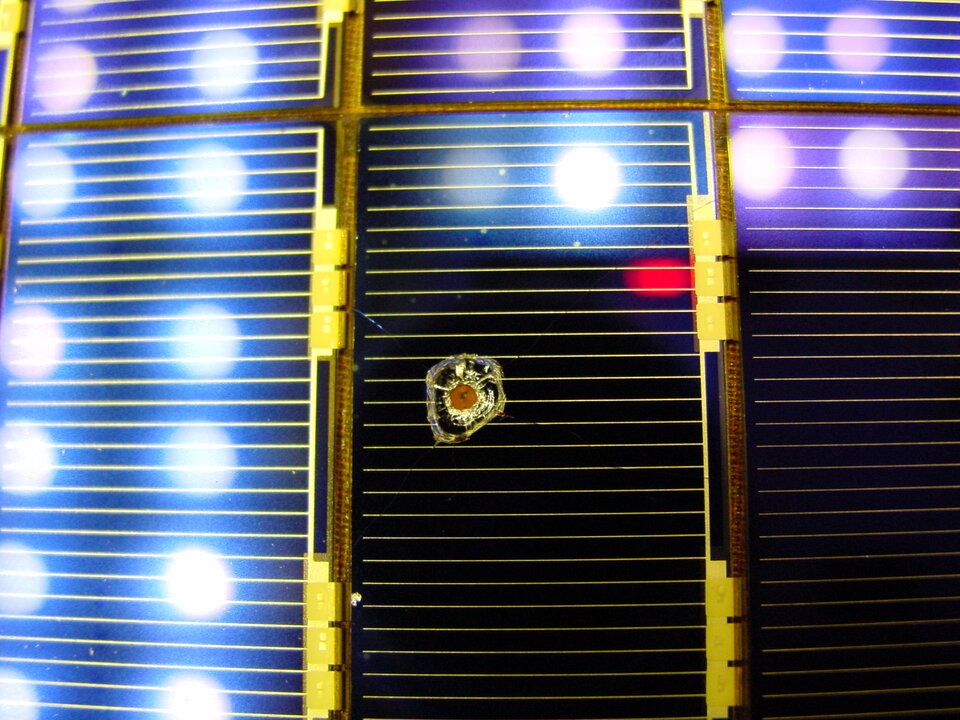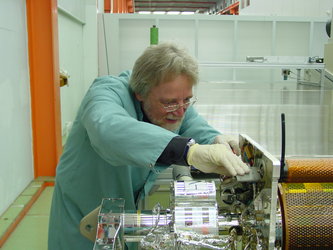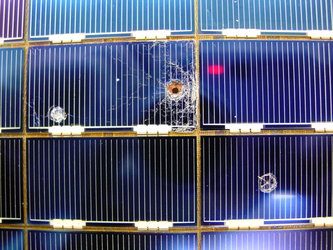Going solar for interplanetary missions
As well as stretching the life of Earth-orbiting satellites, another aim of ESA led R&D is to extend the reach of solar-powered spacecraft across the solar system.
Illumination reduces with distance from the Sun by what is called the inverse square law – venture twice as far away and only a quarter the amount of sunlight is available, go three times as far and only one ninth the amount is left. The ambient temperature also falls in line in distance but in principle this is good news for solar cell designers since cell efficiency increases as temperature goes down.
In practice however, in low solar intensities at temperatures below -100°C, standard solar arrays show worse-than-expected performance due to unpredictable degradations of individual cells. To overcome this problem, in the 1990s a low-intensity low-temperature (LILT) specific solar cell technology was developed. The resulting single-junction silicon cells are now flying aboard the Rosetta comet-rendezvous mission, which is venturing three times further from the Sun than Earth.
"We are currently applying the same principles to our triple-junction GaAs-based solar cells," says Mr Gerlach. "We have now achieved sufficient confidence in our LILT technology that we can confidently operate with solar power all the way out to the orbit of Jupiter, though not beyond."
Also in development are solar cells tailored for the Martian atmospheric spectrum, to power Europe's potential future Mars surface missions beyond the ExoMars rover.
Paradoxically, operating solar cells close to the Sun actually presents a much taller order, as cell efficiency decreases as temperature increases. Venus Express needs to endure spacecraft heating four times higher than normal, while ESA's BepiColombo mission to Mercury will have to cope with solar radiation ten times more intense than that of Earth orbit, and to temperatures of about 350°C – 120 degrees higher than the maximum tolerable solar cell operating temperature. The Agency's Solar Orbiter probe will fly even closer, experiencing sunlight 22 times brighter than in Earth orbit.
The solar arrays are being designed to remain operational by incorporating mirror reflectors next to each solar cell row plus other temperature reduction measures, such as increased in-plane thermal conductivity of solar panel substrates, as well as maintaining a high angle of inclination relative to the Sun – these strategies collectively reducing temperature down to tolerable levels.
Solar spin-offs

ESA's space solar cell research has led to terrestrial spin-offs, sometimes in surprising directions. One Agency partner, Azur Space Solar Power GmbH in Germany, has already applied the same LILT technology used to keep spacecraft powered beyond Mars to security keycard systems that can charge themselves using indoor light alone.
And in January Germany's Fraunhofer Institute employed triple junction solar cells developed for space applications to achieve a world record 41.1% solar cell efficiency in January using sunlight concentrated by a factor of 454.
Might similar solar concentration systems be a means of boosting space-based solar cell performance? Past American attempts proved unfortunate – angled reflector panels on telecommunication satellite arrays sped up degradation rates.
However Belgian company CSL does plan to test an optical solar cell concentrator system on a smaller scale, as one of the experimental payloads aboard ESA's Proba-2 technology demonstrator satellite, launching later in 2009.
More generally, ESA R&D will continue to drive solar cell technology advances into the future, ensuring the competitiveness and independence of European industry. Mr Gerlach estimates that 33% efficiency will be reached early in the 2010s.
More information
Lothar.Gerlach @ esa.int





